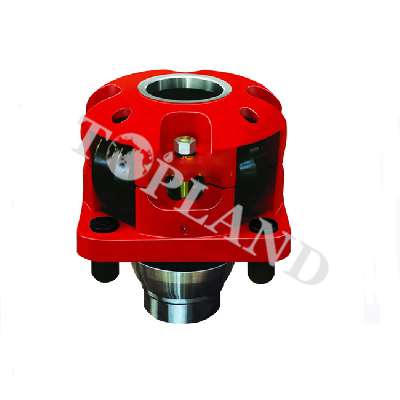DRILLING ADVANCES
Expounding a justifiably fatalistic attitude, one operator suggests the best way to survive the inevitable downturn and the often-permanent loss of experienced personnel is to plan for it when things are going well.
“What’s helped us in the past is coming up with a check list and a roadmap that is permanently there as a starting point, so when we come out of these downturns we can start up where we left off,” says BPX Energy Drilling Engineering Supervisor, Permian Assets, Fred Farb.
One of the most publicized casualties of a chronically cyclical industry, the loss of talented rig hands and engineering staff, all-too-often can aggravate problems downhole. While the industry’s capacity to advance drilling technologies is unquestionable, operators and service companies addressing the latest IADC Drilling Engineering Committee’s (DEC) technology forum said lingering performance limiters can be exacerbated when expertise falls victim to inescapable slowdowns.
“A past, present and most likely future challenge we’re facing is these downturns and the cyclical nature of our business,” Farb said during the virtual forum on Sept. 29. “It’s a performance limiter from the aspect that it really hurts the consistency. It affects us on the tool side, the service side and the operating side.”
Operational consistency is one of the objectives driving a wave of new advancements engineered to help mitigate those limiters and enable operators to capture maximum asset value.
Corralling HFTO. One drilling abnormality gaining more attention of late is deceptive high-frequency torsional oscillations (HFTO), described as a bit-induced torsional vibration of the drillstring that has been shown to destroy rotary steerable systems (RSS) and other downhole hardware, even though drilling may appear to be progressing smoothly. “HFTO can’t be detected with surface measurements, because we think maybe it dissipates pretty quickly,” says Occidental Oil & Gas Drilling Engineer John Rodriquez. “It’s localized at the BHA, so anywhere between the bit and motor is where you’re going to see HFTO occur.”
Rodriquez said HFTO occurrences can be picked up with available downhole vibration sensors, providing they have a minimum recording bandwidth of 800 hz.
The phenomenon, he said, is deceptive in that the top drive torque may be smooth, the ROP acceptable and Mechanical Specific Energy (MSE) within range. “It’s misleading on surface, as you can have stable drilling, but downhole it’s a very different situation,” he said.
As HFTO seems to be instigated by the interaction of the bit cutters with the formation and compounded with aggressive drilling parameters, the bit is a natural detection point. To that end, Oxy worked with a bit manufacturer to install a high-frequency vibration sensor in the shank of a 6 3/4-in bit, part of what Rodriquez hopes is a broader industrywide push.
“There are very few options for fitting HFTO vibration sensors in a 6 3/4-in bit, so this was a milestone for us,” he said. “There was a lot of work in the 1990s on anti-whirl bits, so perhaps we need anti-HFTO bits.”
Digital twins. Another way to predict drilling dysfunctions in real time is by replicating downhole tool behavior through the use of emerging digital twin technology, says Raju Gandikota, chief of innovations of Houston-based MindMesh Inc. Using inputs of real-time surface data, the physics-based model creates a virtual downhole snapshot that predicts drilling dynamics and deviations in the BHA at any depth. “We can (digitally) see the BHA interacting with the borehole,” said Gandikota.
The time-based digital twin is said to produce quantifiable drilling dynamics, such as shock and vibration, downhole MSE and ROP in real time. “This provides a rare insight for drilling engineers to improve drilling performance and take predictive or corrective measures for reliability and operational efficiencies,” he said.
Space-inspired navigation. Capitalizing on its roots in designing automated guidance, navigation and control (GNC) algorithms for spacecraft, Superior QC LLC of Seabrook, Texas, is applying the same GNC framework in the next-generation directional drilling guidance system.
“If you consider the navigation control system of an aerospace application, they’re highly accurate, extremely efficient and provide a good conceptual basis for what we’re trying to do,” said Superior Technical Advisor Joel Dunn. “The process begins with sensors that are just hardware to measure the environment around you, the particular properties, and provide that information to the navigation system.”
The primary objective of the so-called HiFi Guidance system is to automatically make steering and trajectory corrections. “By standardizing the process, you theoretically will improve the consistency and allow you to scale up when you have new directional drilling crews with varying levels of experience,” he said.
In a recent field trial on a five-well pad, the concept was run in the background on two wells to enable the drillers to become comfortable with the system. “On the fifth well, they followed the (HiFi) recommendations 100%, and we were able to reduce the number of slides per 1,000 ft by about half,” he said.
An admitted work-in-progress, the system is undergoing further analysis. One significant challenge is getting wholesale buy-in at the rig site. “Some of the front-line guys using it consider any automated technology as a threat, and we need their endorsement to make this technology catch on. That means changing the mindset and showing the directional [folks] that this is a tool for them to use that actually enhances their abilities and is not a replacement for their jobs per se,” Dunn said.




 Upload RFQ
Upload RFQ





 Twitter
Twitter Linkedin
Linkedin Facebook
Facebook YouTube
YouTube Sales@toplandoil.com
Sales@toplandoil.com +86 21-50890868
+86 21-50890868 Head Office: 8-1011,Lane 5600, Chuansha Road, Pudong, Shanghai, China
Head Office: 8-1011,Lane 5600, Chuansha Road, Pudong, Shanghai, China 